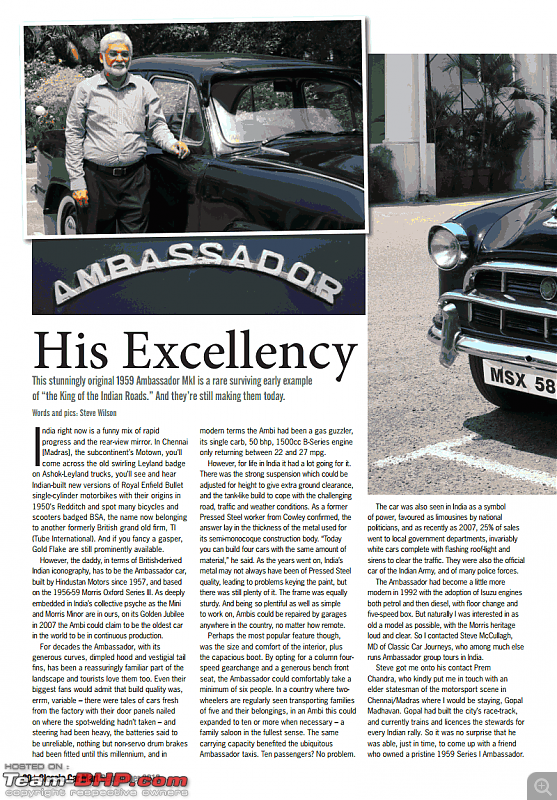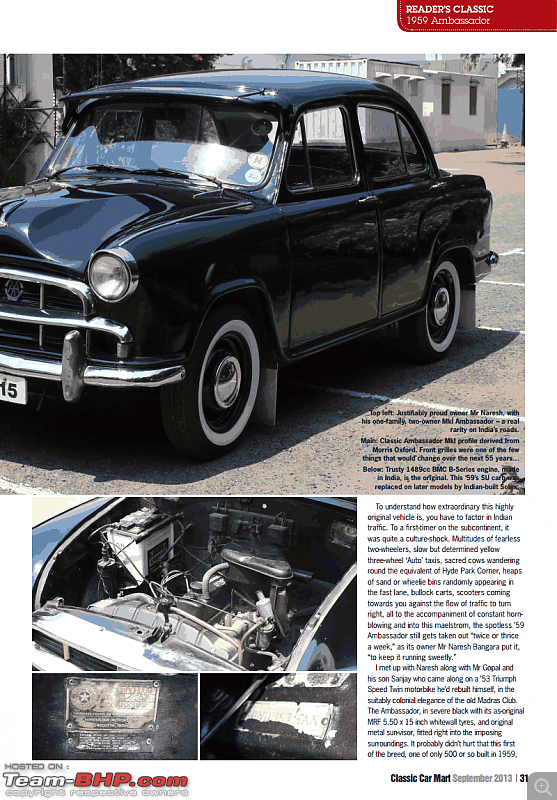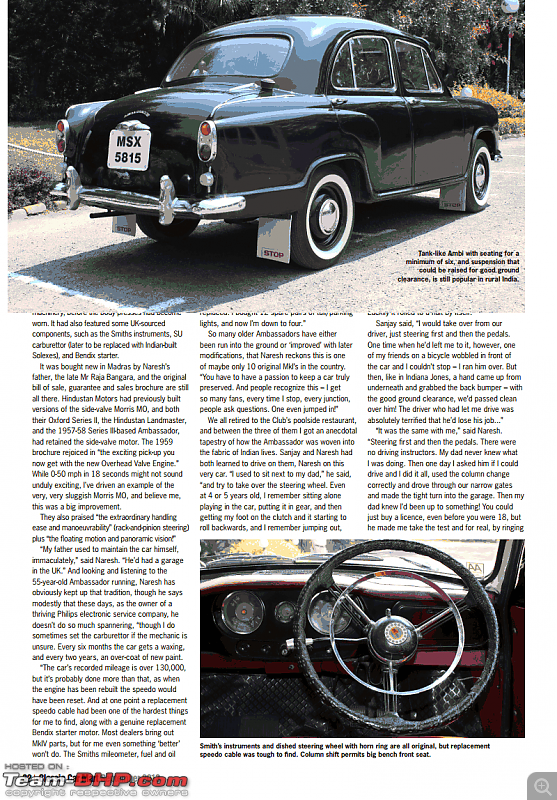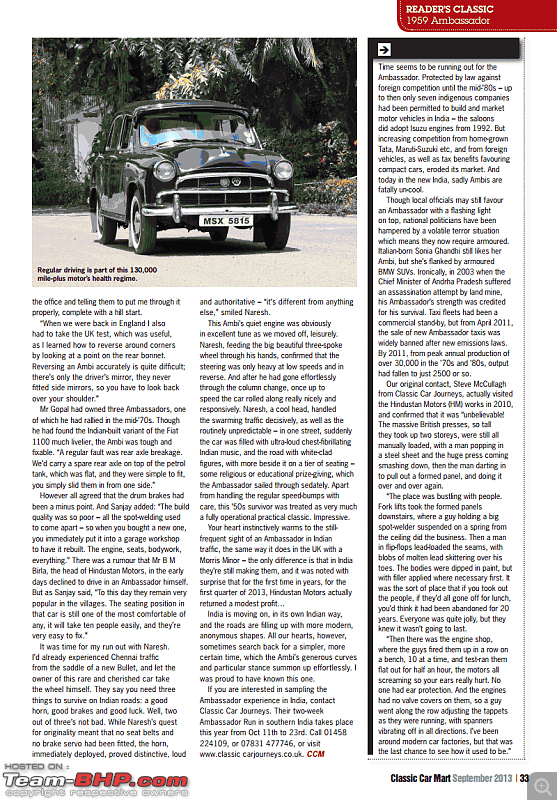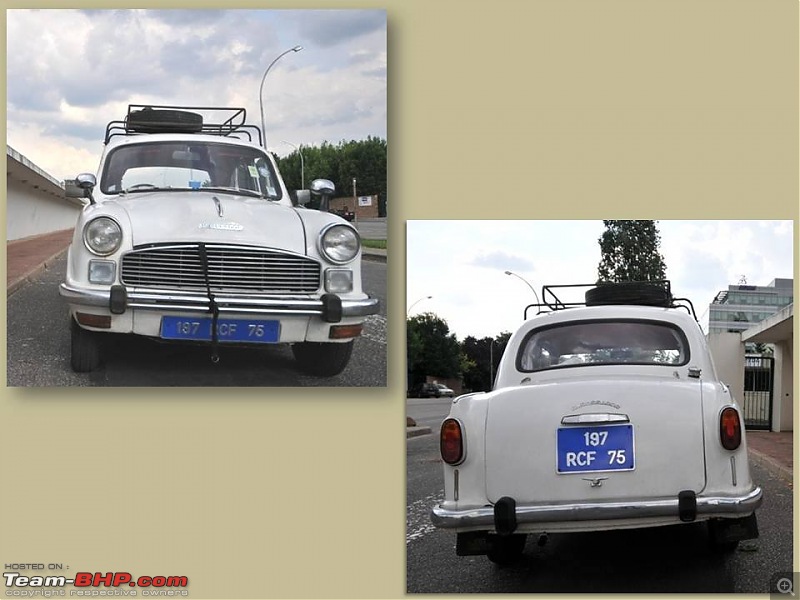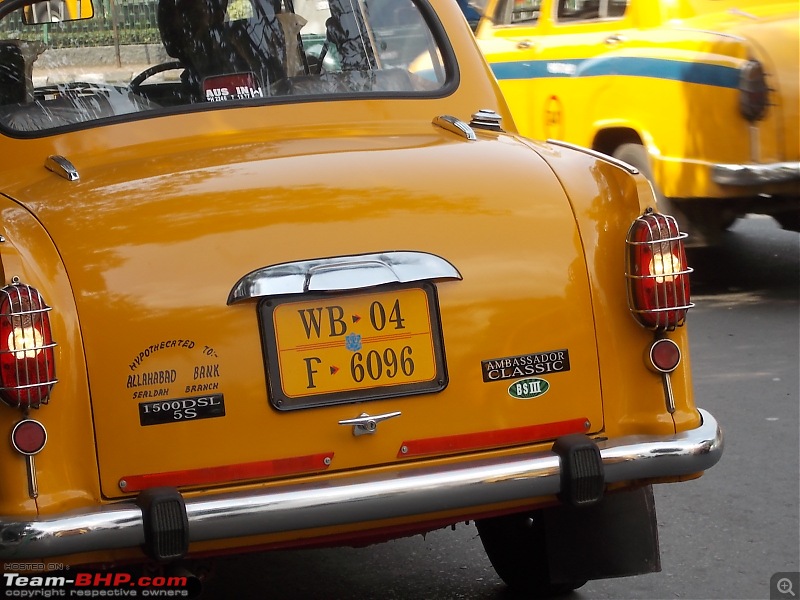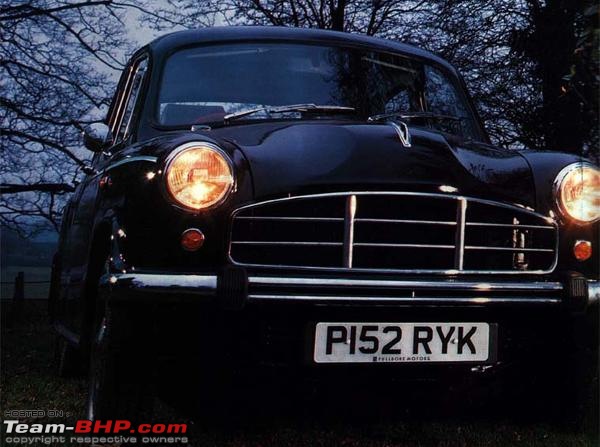Quote:
Originally Posted by Bulldogji  basically each model saw the car go down in terms of quality.
having said this, what comes to memory is as under.
In the early seventies, the SU carb was replaced with a solex resulting in better fuel consumption, brakes which were Lockheed , were replaced with Girling and rubber bushes were replaced by metal ones. Subsequently wheels came with slots for better cooling of brake drums, HM should have simultaneously thought of disc and pads which would have made sense.Option of a larger core radiator was introduced along with a six blade plastic fan for better cooling, and the rear axle was changed to one which did not break often.
if I recall anything else will post.
What do you want this information for ,if I may ask?
planning a PhD on the worlds perhaps longest production car?? ( I think longer than the beetle?) |
Thanks for the information Bulldogji.
In 1959, the BMC, four cylinder, 1476 cc side valve engine gave way to the BMC, 4 cylinder, 1489 cc OHV engine. This OHV engine had appeared in the British Morris Oxford Series II (our Landmaster) but the side valve continued in India courtesy HM, since the Hindustan 14 was launched in 1949 till 1959 powering the Landmaster and older Ambassadors.
The steering box was also changed over (early 1970's) to the one, where the wheel had a slight tilt away from the driver - an inherent defect. The earlier steering box was better for reliability and also perhaps maneuverability.
The dash changed from the most beautiful Smiths meter clusters to the ordinary, Autometer/ Yenkay clusters in 1965, 1969, 1970, 1975 (the cluster design was changed four times) and the introduction of the Deluxe dash (black) with the speedo plus four meters, that appeared for the first time in 1978 (Mark 3). The Deluxe dash went on concurrently with the non- Deluxe ones (speedo plus two gauges) for the Mark 3 and 4's till the centrally placed meter clusters were shifted to the driver's side with the coming of the Nova in the early 1990's.
Another let down in the upholstery quality was the replacement of pure leather seats and door inner upholstery with rexine (cannot call 'em foam leather for the cars made till 1971 or so). The leather seats and upholstery were tan brown in colour (for our market) and looked regal. The Hindustan 10, 14, Landmaster and older Ambassadors (till 1961 or so - may be corrected here) came with the leather upholstery.
The electricals were 12 volts all through, since the Hindustan 14 days, unlike the Willys (6 volts electricals till 1966/67 or so)and later Jeeps of the late 1960's that came with the changeover from 6 volts to 12 volts.
The Older Mark I's had the facility to dim the dash lights or brighten them. There was a trip meter on the speedo and the manually wound Smiths clock continued from the Hindustan 14 (largest diameter) to the Landmaster (tiny) and the Mark I (till 1964).
The headlights sealbeams changed over from Lucas (Made in England) to Lucas (Foreign glass) and much later to Lumax.
The badges, front grille,trims including tail light frames/ number plate lights of chrome on the body were of brass, that was chrome plated. The original chrome plating (including the bumpers) have lasted till now (My Landmaster proves it).
But the newer chrome plating on steel that came along with the Mark II were of poor quality and rusted easily.
The body panels and rather the entire body was quite prone to rusting from day one in rainy areas, ever since the quality was given a backseat.
HM introduced a new 1760 cc BMC petrol engine option in 1978 (Mark 3), to make it more conducive to fit an A.C.. This engine continued with the advent of the Mark 4 but was soon discontinued. Very few were sold.
Many of the changes listed here are not mechanical as requested by WindRide but have a bearing on the progressive decline in quality.
Lastly, I remember reading The Statesman of Calcutta sometime in July 1978, where a new Ambassador buyer reached the dealership to complain about the leaking water trickling within the car. The dealership told him "Don't see the body, see the engine".

 (1)
Thanks
(1)
Thanks

 (9)
Thanks
(9)
Thanks

 (4)
Thanks
(4)
Thanks
 (2)
Thanks
(2)
Thanks
 (1)
Thanks
(1)
Thanks
 (5)
Thanks
(5)
Thanks

 (8)
Thanks
(8)
Thanks
 (1)
Thanks
(1)
Thanks

 (2)
Thanks
(2)
Thanks

 (1)
Thanks
(1)
Thanks
 (4)
Thanks
(4)
Thanks
 (2)
Thanks
(2)
Thanks
 (2)
Thanks
(2)
Thanks





